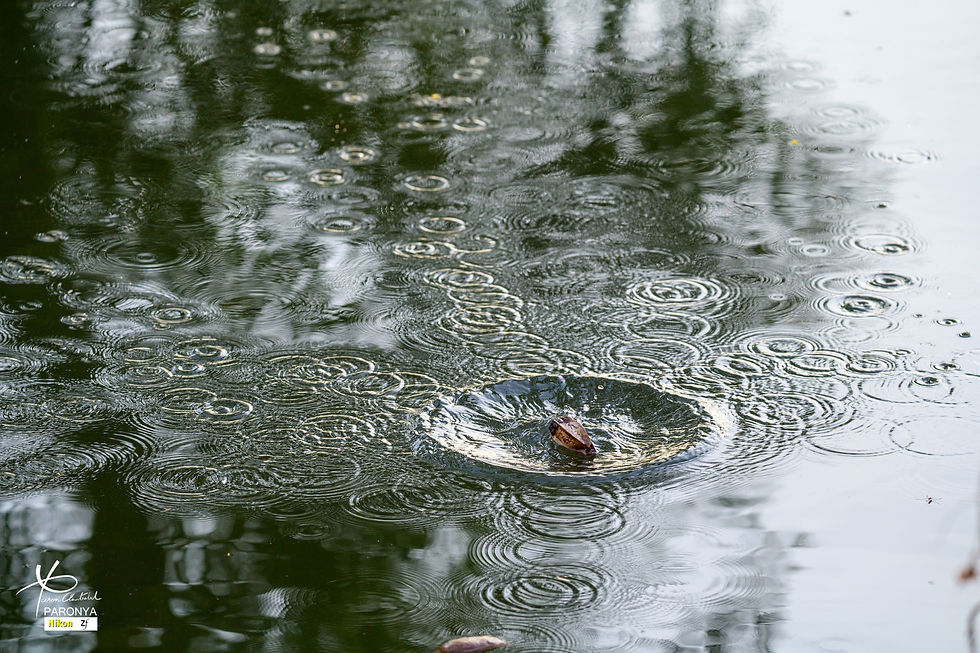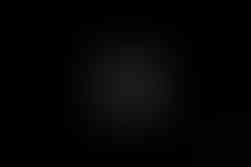Nikkor Z 180-600 f5.6-6.3 Review
- Paron Chatakul
- Dec 31, 2023
- 4 min read
Updated: Apr 4
"สายนกแบบประหยัดต้องมี"

สวัสดีครับ วันนี้ได้ฤกษ์ดี สวัสดีปีใหม่ 2024 เพื่อนพี่น้องทุกท่าน หลังจากใช้งานเจ้า Nikkor Z 180-600 f5.6-6.3 VR มาสักพัก (ใหญ่ ๆ) ก็ขอเอามาบอกเล่าให้เพื่อนพี่น้องไว้เป็นข้อมูลเผื่อใครกำลังลังเลกับเลนส์ตัวนี้ครับ
ตั้งแต่เล่นกล้องมาผมมีโอกาสได้ลองใช้เลนส์ช่วง Super telephoto อยู่สัก 4 ตัว ได้แก่
- Tamron SP 150-600 f5-6.3 Di VC USD
- Nikkor 200-500 f5.6 VR
- Sigma 100-400 f5-6.3 DG DN OS C
- Sigma 150-600 f5-6.3 DG DN OS Sports
- Nikkor Z 180-600 f5.6-6.3 VR
ก็ต้องบอกว่ามันเป็นเลนส์คนละยุคคนละสมัยกัน จะเอามาเปรียบเทียบกันทั้งหมดคงไม่ได้ แต่จำได้ว่าสมัยที่ใช้ Tamron สีมันจืด ภาพมันแบน เลยเปลี่ยนมาใช้ Nikkor 200-500 แทนเพราะได้ภาพดีกว่า ก่อนจะเลิกรากันไปหันมาเล่น L mount ก็ไฟต์บังคับต้องมาเจอกับ Sigma 100-400 ซึ่งเบาดีสีสวย ลองดูกันได้ที่ https://www.paronya.com/single-post/sigma-100-400-5-6-3-dg-dn-os-c-1 ก่อนที่จะปล่อยไปเพราะ Sigma 150-600 Sports ตัวใหม่ที่เพิ่งออกมาทีหลัง ภาพดีเช่นกันครับ สีสันดี โฟกัสใช้ได้ เป็นเลนส์ที่โดยรวมผมชอบมันมาก ๆ เลยนะครับ การออกแบบภายนอกใส่ใจมาอย่างดี ไม่ชอบอยู่นิดเดียวเองคือฐานตรงคอลล่ามันสั้นไปหน่อย หิ้วไม่สะดวก ตอนนั้นยังติด Teleconverter 2X เข้าไปด้วย คุณภาพของภาพลดลงหน่อยแต่ได้ระยะมาเป็น 1200mm สะใจดี ใครสนใจลองไปอ่านรีวิวกันได้ที่ https://www.paronya.com/single-post/sigma-150-600-f5-6-3-dg-dn-os-sport และ https://www.paronya.com/single-post/sigma-tc-2011 สำหรับ Teleconverter ใช้กันมาสักพักจนเลิกคบกับ L mount กลับมาหา Nikon อีก เลยมาลงเอยกับตัวใหม่ล่าสุดนี้ Nikkor Z 180-600 f5.6-6.3 VR

Nikon Zf + Nikkor Z 180-600 f5.6-6.3 @ f6.3

Nikon Zf + Nikkor Z 180-600 f5.6-6.3 @ f6.3
ซูม 600mm กับซูม 400mm เลือกอะไรดี
เลนส์ช่วงนี้มันแปลกครับเวลาไม่มีติดตู้ก็จะรู้สึกว่าเลนส์ไม่ครบช่วง ขาดอะไรไปบางอย่าง จะไปถ่ายนกถ่ายหนูกก็หงุดหงิดเพราะซูมไม่ถึงใจ แต่พอมีแล้วก็มักจะขี้เกียจแบกเพราะมันหนักระดับ 2 kg กันทุกตัว ถ้าใครไม่ต้องการระยะ 600mm จริง ๆ ผมเชียร์ไปช่วง 100-400 หมดเลยนะครับ เลนส์มันเบา แบกสบายกว่ามาก คุณภาพก็ดี ส่วน 70-200 นั้นผมแทบไม่เคยใช้เลย น่าจะเหมาะกับการถ่ายพวกงาน event ต่าง ๆ มากกว่าการหิ้วเข้าป่าแบบเรา
Nikon Zf + Nikkor Z 180-600 f5.6-6.3 comparing between 180mm and 600mm.
Nikkor Z 24-120 f4 S @ 24mm / Nikkor Z 180-600 f5.6-6.3 @ 600mm
ความประทับใจภายนอก
เลนส์ตัวนี้แนวความคิดในการออกแบบดีมาก ที่พยายามรักษาสมดุลของน้ำหนักโดยการทำให้เป็น Internal zoom และสมดุลไม่เปลี่ยนแปลงเวลาเปลี่ยนระยะการถ่ายภาพ ลองหมุนที่ 180 และ 600 วางบนพื้นโดยใช้ขาจาก Collar ของมันเอง ก็พบว่าสมดุลดี ถือถ่ายจริงก็สมดุลดีครับ อย่างไรก็ตามจะบอกไว้สักนิด เลนส์ที่ออกมาก่อนอย่าง Sigma 150-600 sport ถึงแม้ว่ากระบอกซูมจะยืดออก แต่ก็ทำสมดุลได้ดีเช่นเดียวกัน ลองทดสอบดูก็รักษาสมดุลของน้ำหนักเลนส์ได้ดีมาก ๆ เช่นเดียวกันครับ (แถมผมยังชอบชั้นเชิงในการออกแบบเลนส์ภายนอกของ Sigma มาก ๆ ทั้ง Collar ไปจนถึง Lens hood ลองตามกลับไปอ่านกันดูครับ เหนือชั้นไปก่อนกาลเรียบร้อย) แต่นั้นไม่ได้แปลว่า Nikkor 180-600 จะแย่นะครับ มันยังเป็นเลนส์ที่ออกแบบได้ยอดเยี่ยมและคุ้มค่ากับการรอคอยครับ
เรื่องของรูรับแสง
พูดถึงเรื่องรูรับแสงกันนิดนึง เลนส์ Super telephoto ราคาประหยัดกลุ่มนี้มักมีค่ารูรับแสงเริ่มต้นที่ 5 หรือ 5.6 แล้วไล่ไปจบแถว ๆ 6.3 กันแทบทั้งนั้น มันโอเคเวลาถ่ายในที่มีแสงมาก ๆ ครับ แต่ในบางสถานการณ์ที่แสงน้อยและต้องการหยุดการเคลื่อนไหวของแบบ เช่น เวลาเดินดูนกเช้า ๆ หรือเย็น ๆ เจอนกในพุ่มไม้บางทีต้องดัน ISO กันไปถึง 25600 เลยก็มี ทำให้คุณภาพของภาพที่ได้มามันถูกลดลงด้วย noise ที่เกิดขึ้น เลนส์ทางยาวโฟกัสเดี่ยวแบบจริงจังอย่าง 600mm f4 ถึงแม้ว่าได้ความไวแสงเพิ่มมาแค่ 1.5 stop แต่นั่นหมายถึง ISO สามารถลดลงมาได้ด้วย ทำให้คุณภาพที่ได้ดีกว่ามากมายจริง ๆ นอกเหนือจากรูรับแสงแล้ว เลนส์ที่เป็นเลนส์ฟิกซ์ทางยาวโฟกัสเดี่ยวก็มักจะให้ภาพที่ดีกว่าเลนส์ซูมโดยพื้นฐานอยู่แล้ว (เคยใช้ Nikkor 300mm f2.8 ภาพที่ได้มันแตกต่างมาก ๆ ครับ) อย่างไรก็ตามราคาเลนส์พวกนี้ไม่น่ารักเลย เดี๋ยวนี้ราคาเทียบเท่ารถคันนึงเลยนะครับ ซึ่งเราเองไม่ได้เป็นนักถ่ายภาพสัตว์มืออาชีพ ก็ต้องยอมรับสภาพไป หันมาเล่นเลนส์ซูมพวกนี้มันประหยัดกว่ามากจริง ๆ

Nikon Zf + Nikkor Z 180-600 f5.6-6.3 @ f6.3

Nikon Zf + Nikkor Z 180-600 f5.6-6.3 @ f6.3
คุณภาพของภาพ
ก่อนเลนส์จะออกวางขายในไทย นักรีวิวหลายสำนักอวยชัยให้พรกันสุด ๆ 180-600 เรียกได้ว่าเป็นกลายเป็นเลนส์ตัวนึงที่กระแสดี คนตั้งตารอซื้อหามาใช้กันเยอะ แต่หลังจากที่ได้ลองเจ็บเองเล่นเองมาแล้วก็พบว่ามันไม่ได้ดีแบบไร้ที่ติกันแบบนั้น เลนส์ตัวนี้แอบมีข้อจำกัดอยู่ เวลาเปิดรูรับแสงกว้างสุดแล้วถ่ายย้อนแสงหรือฉากหลังที่มีความเปรียบต่างของแสงสูง ๆ ครับ ภาพที่ได้คมถึงคมมากน่าพอใจแต่ส่วนที่เจอย้อนแสงมาจะฟุ้งเลยครับ ซึ่งผมไม่โอเคกับอาการนี้มาก ๆ ลองดูตามภาพตัวอย่างได้เลยครับ มุมย้อนแสงแบบนี้ต้องเจอประจำเวลาถ่ายนกเสียด้วย ตรงนี้ผมเชื่อว่านักรีวิวหลายสำนักไม่ได้พูดถึง เรามาว่ากันตรง ๆ เพื่อเพื่อนพี่น้องที่กำลังสนใจนะครับ เลนส์ตัวนี้เป็นตัวเดียวในชุดของผมที่ไม่ใช่ S-line เลยไม่แน่ใจว่าถ้าเป็นตัว 100-400 f4.5-5.6 VR S ตัวนั้นจะทำคุณภาพของภาพได้ดีกว่านี้ไหม แต่ S-line ที่เหลืออีก 3 ตัวในชุดที่ผมใช้ ถึงแม้ว่าจะเป็น S-line ตัวราคาถูก แต่การใช้งานไม่มีประเด็นเรื่องคุณภาพของภาพใด ๆ เลยครับ

Nikon Zf + Nikkor Z 180-600 f5.6-6.3 @ f6.3 -- disappointing

Nikon Z6ii + Nikkor Z 180-600 f5.6-6.3 @ f6.3 -- disappointing
ส่วนความคมไม่น่าเป็นห่วง เลนส์ตัวนี้คมหวังผลได้สบาย (เหมือนตัวอื่น ๆ Nikkor 200-500, Sigma 150-600 ก็คมแบบนี้เหมือนกัน) หลัง ๆ มาถึงย้ำนักย้ำหนากับผู้ที่กำลังเลือกซื้อกล้องคู่ใจสักชุดว่า เรื่องความคม คุณภาพของภาพ เดี๋ยวนี้ไม่ทิ้งกันแล้วครับ ดีทั้งนั้น ให้ดูคาแรกเตอร์ของภาพเป็นหลักก่อนว่าชอบภาพ ชอบสีสันของกล้องยี่ห้อไหน แล้วสาย Performance ค่อยมาพิจารณาร่วมกับ “โอกาสในการได้ภาพ” ของกล้องยี่ห้อนั้น ๆ เช่น ระบบโฟกัส การถ่ายต่อเนื่อง ฯลฯ

Nikon Z6ii + Nikkor Z 180-600 f5.6-6.3 @ f6.3

Nikon Z6ii + Nikkor Z 180-600 f5.6-6.3 @ f6.3
ระยะทำการ 600mm มันไปได้ไกลแค่ไหน ก็ต้องตอบว่ามันไม่สะใจเท่าซูม 100x ของโทรศัพท์สมัยนี้หรอกครับ แต่มันจะได้คุณภาพของภาพที่มากกว่า หวังผลใช้งานจริงจังได้ ถามว่าถ่ายไปได้ไกลแค่ไหนก็คงต้องเอาฉากคลาสสิกของเลนส์ super telephoto มาให้ดู คือการถ่ายดวงจันทร์ ที่ 600mm FX จะได้ขนาดประมาณนี้ครับ ความคม ความนวล การไล่โทนต่าง ๆ ถือว่าดีมาก ๆ ถ้ายังไม่สะใจ ขอเอาภาพดาวพฤหัสและดวงจันทร์บริวารอีก 4 ดวงมาให้พิจารณากันด้วยครับ ภาพที่ถ่ายได้จริงเปรียบเทียบกับภาพที่ crop มา (ผมจัดการไฟล์เต็มที่ใน Lightroom นะครับ ลดจุดรบกวนต่าง ๆ ไปเรียบร้อย)

Nikon Zf + Nikkor Z 180-600 f5.6-6.3 ที่ f6.3

Nikon Zf + Nikkor Z 180-600 f5.6-6.3 ที่ f6.3

Nikon Zf + Nikkor Z 180-600 f5.6-6.3 @ f6.3 Jupiter and its moons cropped.
อีกประเด็นหนึ่งที่น่าจะเป็นคำถามคือ ถ้าใช้ 600mm แล้วเปิด mode DX ทำให้ได้ภาพขนาดเล็กลงเหลือประมาณ 10.6 mp กับถ่าย FX เต็ม 24 mp มา crop เอาเองอันไหนจะดีกว่ากัน เท่าที่ลองใช้เอง ไม่ได้ทำการทดสอบจริงจังนะครับ ผมสังเกตได้ว่าภาพที่ถ่ายมาในขนาด DX ตั้งแต่ในกล้อง ให้ภาพที่คมชัดมากกว่าการนำภาพใหญ่มา crop เองครับ (ตรงนี้ผมอาจไม่เก่งซอฟแวร์ เลยไม่ขอฟันธงว่าอย่างไร ให้ไปลองกันเองครับ)
Nikon Zf + Nikkor Z 180-600 f5.6-6.3 FX 24mp vs. DX 10.6mp
Nikon Zf + Nikkor Z 180-600 f5.6-6.3 @ f6.3 FX crop(left) and DX(right)
Nikon Zf + Nikkor Z 180-600 f5.6-6.3 @ f6.3 shot with 600mm and cropped one.
การโฟกัส
Nikkor 180-600 ตั้งนี้การโฟกัสไว้ใจได้ ดีกว่าตัวก่อนอย่างมีนัยยะสำคัญ เร็วกว่า L-mount (Canon ไม่ได้ลองรุ่นใหม่ ๆ เพราะเลิกใช้ไปนานแล้วครับ) ตามสัตว์ได้ดี นกบินไว ๆ แบบพวกจาบคาหัวเขียว หัวส้ม ถือกล้องแพนถ่ายตอนกำลังบิน ยังทำได้ นกแอ่นที่ว่าบินไว ๆ ถ้าแพนตามได้ทันก็โฟกัสทัน แซงแซวหางปลาตอนกำลังบินก็เก็บได้สบาย ๆ ขณะที่เลนส์ช่วงนี้ตัวอื่น ๆ ที่เคยใช้มาไม่เคยทำได้เลย อันนี้ต้องขอชื่นชมและเป็นข้อดีของเลนส์+กล้อง ที่สร้างโอกาสในการได้ภาพมากขึ้นครับ

Nikon Zf + Nikkor Z 180-600 f5.6-6.3 @ f6.3

Nikon Z6ii + Nikkor Z 180-600 f5.6-6.3 @ f6.3

Nikon Zf + Nikkor Z 180-600 f5.6-6.3 @ f6.3
ระบบกันสั่น
ถ้าถ่ายภาพที่ตัวแบบนิ่ง ๆ นะครับ ถ่ายช่วงซูมที่ 600mm ขณะที่ความไวชัตเตอร์ต่ำกว่า 1/100 ยังมีโอกาสเอาอยู่ ระบบ VR ค่อนข้างดีมาก เหมือนที่ 200-500 เคยทำได้ดีมากก่อน ตรงนี้ค่อนข้างประทับใจและไม่มีข้อติติงอะไรครับ

Nikon Zf + Nikkor Z 180-600 f5.6-6.3 @ f6.3
ประสบการณ์ตรงจากเลนส์ตัวนี้คือ เลนส์มันออกแบบเอาไว้สำหรับถ่ายสัตว์ป่า ถ่ายนกครับ มันปฏิบัติหน้าที่ได้อย่างดีเยี่ยม แต่ถ้าเอามาใช้ผิดสถานการณ์ เช่น เอามาใช้ถ่ายภาพลูกสาวแข่งยิมนาสติก มันก็พอได้ โฟกัสรวดเร็วตามทัน แต่ในที่แสงน้อยและต้องหยุดความเคลื่อนไหวของนักกีฬา คุณภาพของภาพมันไม่ได้ครับ และถ้าถ่ายที่ทางยาวโฟกัสเยอะ ๆ เช่น 600mm เอามาถ่ายคน หน้าจะแบน ไม่สวยนะครับ ของผมมันช่วยไม่ได้ จะให้ซื้อเลนส์ใหม่เพื่อการนี้ยังรู้สึกไม่ค่อยคุ้ม อย่างไรก็ตามการถ่าย Event ในลักษณะนี้ หากท่านใดสนใจขอให้พิจารณาช่วง 70-200 f2.8 จะเหมาะสมกว่ามากครับ ขึ้นอยู่กับงบประมาณและโอกาสการใช้งานของแต่ละท่านก็แล้วกัน ถ้ามีโอกาสได้นั่งติดขอบสนามผมลองเอา Nikkor 85/1.8S มาถ่าย ให้ภาพได้ดีกว่ามากจริง ๆ ครับ ลองพิจารณากันดู
สำหรับผมเลนส์ตัวนี้เหมาะกับอาชีพมาก ถ่ายภาพดอกไม้ ผลไม้ ตามเรือนยอดของต้นไม้ใหญ่ แถมด้วยการดูนกดูสัตว์ ผมว่าอยู่ในระดับที่ “โอเค” แล้วเมื่อเทียบกับราคาที่จ่ายไป คุณภาพของภาพและการโฟกัสไม่มีข้อติ แค่เสียเปรียบและเสียโอกาสในการได้ภาพดี ๆ ในสถานการณ์ที่มีแสงน้อยเท่านั้นเอง (ซึ่งก็เหมือนกับตัวอื่น ๆ ที่เคยใช้มาทั้งหมด) ส่วนจุดรบกวนที่เกิดขึ้นจาก ISO สูง ๆ ขอบอกเลยว่ากล้องแต่ละยี่ห้อ ให้ผลลัพธ์ออกมาไม่เหมือนกันนะครับ ส่วนตัวผมชอบจุดรบกวนจากตระกูล L-mount มากกว่า Nikon เพราะมันดูเป็นเกรนธรรมชาติ ไม่ขัดสายตา ลองไปเล่นกันดูครับ โดยสรุปก็คือ 180-600 ค่อนข้างเป็นเลนส์เฉพาะทาง พิจารณาการใช้งาน และโอกาสในการใช้กันดี ๆ และถ้าต้องเลือกซื้อเลนส์ในกลุ่มนี้อยู่แล้ว ตัวนี้ถือว่าใช้ได้ แม้ในบางสถานการณ์ยังแอบไปคิดถึง Nikkor 100-400 f4.5-5.6 VR S อยู่บ้างก็ตาม... สวัสดี

Nikon Zf + Nikkor Z 180-600 f5.6-6.3 @ f6.3

Nikon Zf + Nikkor Z 180-600 f5.6-6.3 @ f6.3

Nikon Zf + Nikkor Z 180-600 f5.6-6.3 @ f6.3

Nikon Zf + Nikkor Z 180-600 f5.6-6.3 @ f6.3
ปิดท้ายรีวิวว่าเมื่อไม่นานมานี้มีโอกาสแบกเลนส์ตัวนี้ไปเที่ยวเชียงใหม่ ขึ้นดอยอินทนนท์เลยยิงนกมาฝากกัน ให้เห็นว่าใช้งานจริง ๆ เป็นอย่างไรนะครับ ส่วนตัวยังรำคาญกับภาพที่ย้อนแสงแล้วฟุ้ง F ก็แคบอยู่แล้วยังคุณภาพไม่ได้อีก อันนี้เหนื่อยใจพอควร มาฟุ้งตอนเจอนกเทพภาพสุดท้าย ส่วนภาพอื่น ๆ ถ้าไม่ย้อนแสงผมว่าใช้งานได้ดีไม่มีที่ติอะไรครับ

Nikon Zf + Nikkor Z 180-600 f5.6-6.3 @ f6.3 "กระทาดงคอสีแสด" Arborophila rufogularis
ถือถ่ายเวลากดชัตเตอร์ภาพขยับ ขาขาดเลย

Nikon Zf + Nikkor Z 180-600 f5.6-6.3 @ f6.3 "หางรำดำ" Malacias melanoleucus

Nikon Zf + Nikkor Z 180-600 f5.6-6.3 @ f6.3 "กินปลีหางยาวเขียว" Aethopyga nipalensis

Nikon Zf + Nikkor Z 180-600 f5.6-6.3 @ f6.3 "เอี้ยงถ้ำ" Myophonus caeruleus

Nikon Zf + Nikkor Z 180-600 f5.6-6.3 @ f6.3 "กระจิ๊ดหางขาวใหญ่" Phylloscopus claudiae

Nikon Zf + Nikkor Z 180-600 f5.6-6.3 @ f6.3 "ศิวะหางสีตาล" Chrysominla strigula

Nikon Zf + Nikkor Z 180-600 f5.6-6.3 @ f6.3 "เดินดงอกเทา" Turdus feae























Comments